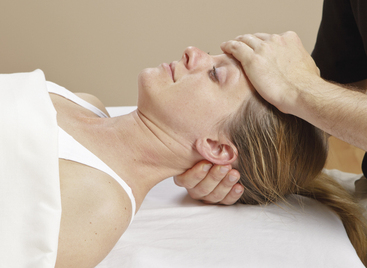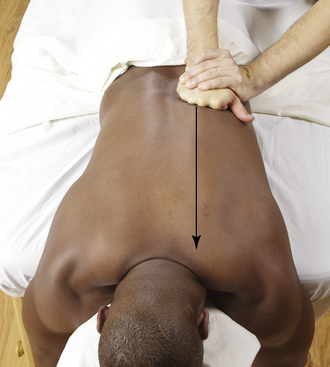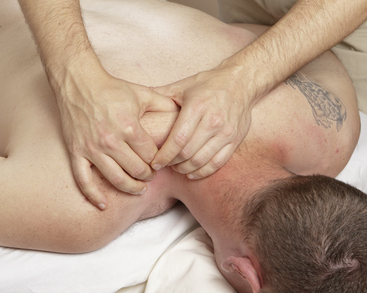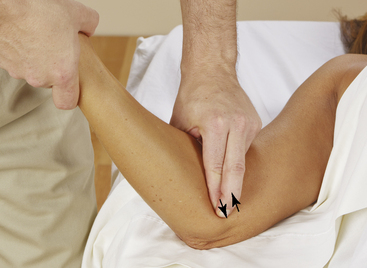Chapter 3 Common Approaches
Basic swedish massage
History tells us that the roots of massage are well grounded in culture and tradition. Written accounts of massage show that it has been around for more than 5,000 years and can be found in every culture around the world. Pehr Henrik Ling (1776-1839) is credited with many developments and systemized routines known as medical gymnastics (Figure 3-1). These included active and passive movements like exercise, stroking, shaking, hacking, and squeezing. Dr. Johann Mezger (1839-1909) coined the French terms effleurage, pétrissage, friction, and tapotement to describe these movements, and brought them to the scientific community.
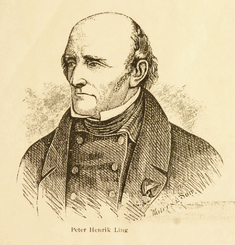
Figure 3-1 Pehr Henrik Ling (1776-1839). Father of physical therapy and Swedish massage.
(Courtesy Calvert RN: The history of massage: an illustrated survey from around the world. Rochester, 2002, Healing Arts Press.)
Touch without movement
Touch without movement is often overlooked or not defined as an important technique in the massage industry. This technique is applied to the body without visible movement. For example, therapists commonly hold the client’s head and touch the back or feet at the beginning and end of the session for a lasting comfort and calming effect. Another important approach in this category is direct or static pressure. These are commonly used in deep tissue massage and in craniosacral, myofascial, and trigger-point approaches. Direct pressure has often been classified as “touch without movement” because of the compression it creates. It is effective because it causes the fascial system to melt and unwind, and because it creates ischemia at a particular location (Figure 3-2).
Effleurage
Effleurage is defined as sliding or gliding strokes over the body with a continuous motion. Gliding, stripping, broadening, and stroking are common terms used to define techniques that fall under this category. Effleurage is one of the most versatile and most used techniques by massage therapists. These techniques can be used not only to spread lubricants and as a transitioning stroke, but can also be used to create specific changes within the musculoskeletal system (Figure 3-3).
Pétrissage
Pétrissage strokes involve lifting, kneading, and squeezing the tissues of the body. Kneading, squeezing, skin rolling, and some compression techniques can be classified under pétrissage. The focus of pétrissage techniques is to press or move the tissues between the hands to aid in breaking up adhesions and loosen the muscle fibers (Figure 3-4).
Friction
Friction describes techniques that move one surface over another in a repetitive motion. Friction can take place at many depths within the body. Deep friction addresses the more internal layers of tissue, whereas superficial friction addresses the outer layers. Longitudinal friction is applied with the fiber of the muscle, whereas transverse or cross-fiber friction is applied against the grain of the muscle. Friction can also be applied in a circular or multidirectional pattern. Multidirectional friction is an effective technique when working with scar tissue (Figure 3-5).
Tapotement
Tapotement consists of quick, repetitive, rhythmic motions used to stimulate tissues. Some tapotement techniques like cupping are often referred to as percussion or percussive techniques. Percussive techniques include tapping, hacking, beating, cupping, and pincement (Figure 3-6).
Stay updated, free articles. Join our Telegram channel

Full access? Get Clinical Tree


